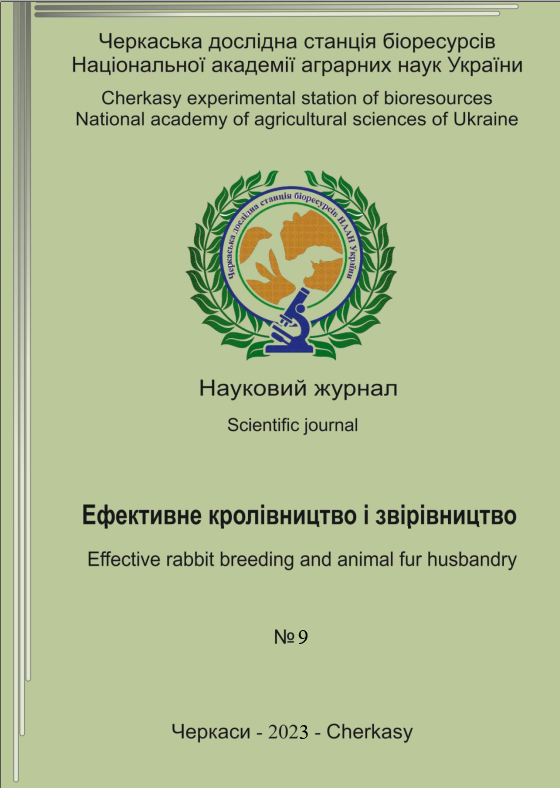PRODUCTIVE EFFECT OF STARTER COMBINED FEED ON REPRODUCTIVE QUALITIES OF RABBITS
DOI:
https://doi.org/10.37617/2708-0617.2023.9.45-59Keywords:
rabbits, recipe, starter compound feed, reproductive qualities, efficiency.Abstract
Research was conducted on Poltava Silver rabbits on the basis of the
experimental rabbit farm of the Cherkasy Research Station of Bioresources, taking
into account world experience and using generally accepted methods. According to the experimental scheme, 20 heads of repair rabbits will be
selected for each of the groups at the age of 90 days. The preparatory period lasted
5 days, and the main one - 180 days (before the rabbits are weaned at the age of
28 days). The same combined feed was developed for both groups of females - for
female rabbits with a reproductive capacity of more than 50 rabbits during the
production year.
During the entire period of rearing of rabbits, the calculations showed that
feed costs per 1 kg of live weight gain of rabbits in the control group amounted to
4.7 kg, and in the experimental group - 4.30 kg (difference - 70 g or 1.6%). Thus,
the animals of the experimental group had slightly lower growth rates than their
counterparts of the first group.
However, the rearing of repair rabbits proved that there was no significant
difference between the groups in terms of fattening indicators, only the
experimental group had a percentage of mated females of 95% compared to the
control group of 85%, prevailing by 10%.
Summarizes indicators: multiple fecundity, bone and large fecundity, nest
weight at birth. It was higher in female rabbits of the experimental group -
530±12.03g, in the control group - 500±11.0g, which is less by 30g with a
probability of p<0.05.
The second maternal indicator that directly affects the further fattening
capacity of young rabbits is milk yield (live weight of the nest at 20 days of age). It
was higher in female rabbits of the 2nd group compared to the 1st and was
2.64±0.05 (р<0.05) and prevailed by 150g.
The weight of the nest at weaning was probably (p<0.01) higher in female
rabbits of the experimental group (2nd group) - 5.55±0.11kg, which is 450g more
than the 1st.
It was established that the highest percentage of survival of rabbits when
weaned at 28 days of age was observed in female rabbits of the second research
group - 98.7%. The preservation of the nest until weaning was largely influenced
by the use of starter compound feed during intensive industrial breeding of female
rabbits, this indicator was manifested as a set of productive features.
The economic efficiency of the use of starter feed for repair rabbits at the age
of 18-42 days improves their reproductive qualities, they exceeded the female
rabbits of the control group in terms of net income by UAH 18. for one lap. For a
full year of production (8 litters), cash receipts from the use of starter feed per
female rabbit would increase by UAH 144.


